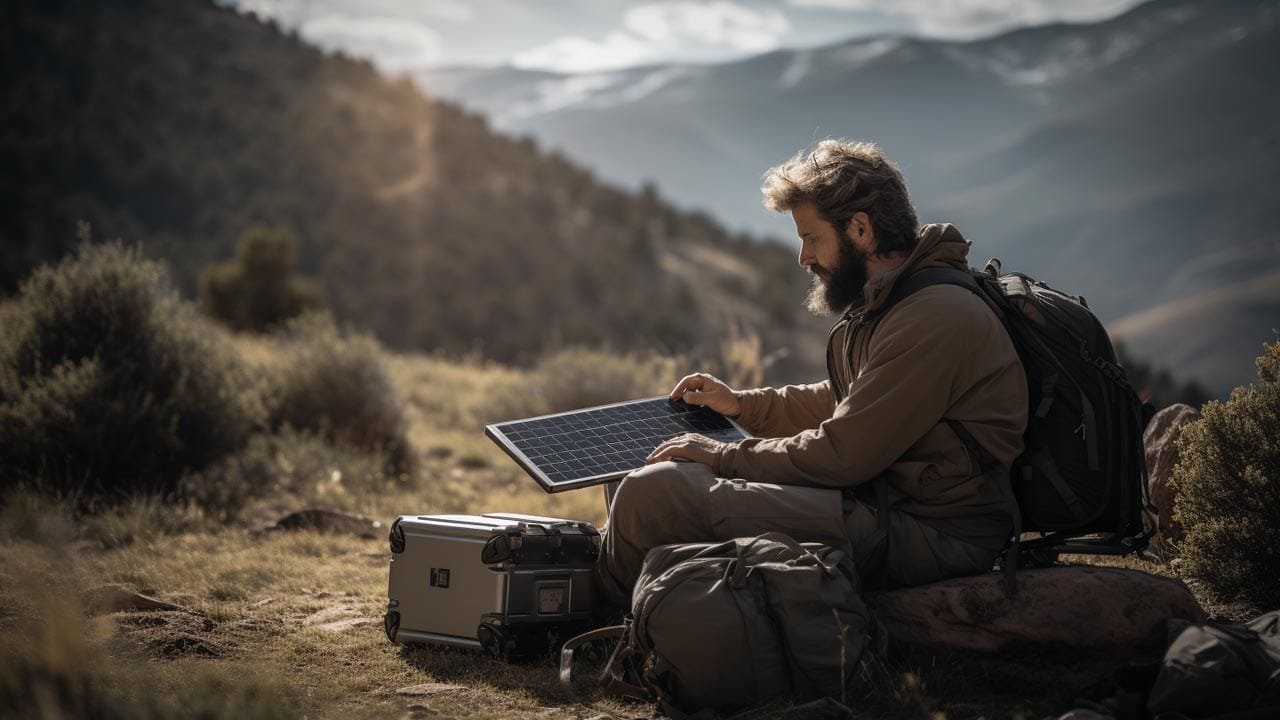What is Long-Range Radio or LoRa?
LoRa is wireless communication and can be used for Off-Grid, Decentralized, and Secure Communications after the grid goes down or as anti-spy commutation devices. LoRa, short for Long Range, represents a significant leap in wireless communication technology. This technique, rooted in the spread spectrum modulation, was primarily developed for military and space communication. Now, it stands at the forefront of IoT (Internet of Things) innovation, revolutionizing how we connect devices over long distances.
Key Takeaways
- LoRa’s unique modulation technique enables long-range, low-power communication.
- It’s pivotal in IoT, offering cost-effective, efficient solutions for smart devices.
Table of Contents
- Understanding LoRa Technology
- Features of LoRa
- LoRaWAN: Extending LoRa’s Capabilities
- Components of a LoRaWAN Network
- Security and Privacy in LoRaWAN
- Key Features and Technical Specifications
- Video Explaining of How Long-Range Radio Works
- Advantages and Disadvantages of Long-Range Radio
- Applications and Use Cases of LoRa
- Frequently Asked Questions
- Final Thoughts
- Resources
Understanding LoRa Technology
LoRa, stemming from “long range,” is a proprietary radio communication technique. Developed by Cycleo of Grenoble, France, and later patented in 2014, this technology is now overseen by Semtech, a key player in its advancement. The essence of Long-Range Radio lies in its use of chirp spread spectrum (CSS) technology, a method that facilitates communication over long distances with minimal power consumption.

Features of LoRa
The chirp spread spectrum modulation is central to LoRa, enabling extensive communication ranges while maintaining low power usage, akin to FSK modulation-based radios. This unique modulation approach, combined with the use of unlicensed sub-GHz radio frequency bands, sets Long-Range Radio apart in the global wireless communication spectrum.
LoRaWAN: Extending LoRa’s Capabilities
LoRaWAN, the backbone of Long-Range Radio network capabilities, is an open, Low Power Wide Area Network (LPWAN) standard designed for IoT solutions. It not only supports long-range communication but also facilitates bi-directional protocols, end-to-end security, and efficient battery usage in IoT applications. LoRaWAN and Long-Range Radio together create a robust framework, with LoRaWAN managing the network’s communication protocol and system architecture, while Long-Range Radio ensures the long-range communication link.

Components of a LoRaWAN Network
A LoRaWAN network comprises several key components:
- End Devices: These are typically sensors or actuators, categorized into three classes based on their communication and battery needs. Class A devices offer bidirectional communication, Class B includes scheduled receive slots, and Class C features maximal receive slots.
- Gateways: Serving as bridges, these devices relay messages between end-devices and the network server, supporting bi-directional communication and equipped with multicast capabilities.
- Network Server: The linchpin of the LoRaWAN network, it manages the flow of data and commands between application servers and gateways, ensuring efficient data rate management and packet delivery.

Security and Privacy in LoRaWAN
In the realm of IoT, security is paramount. LoRaWAN addresses this by incorporating robust encryption methods. The protocol uses per-device AES128 keys, ensuring secure communication. It also provides protection against common threats such as replay and man-in-the-middle attacks. This dual-layered approach, involving both Network Session and Application Session keys, guarantees that both network management and application communication remain secure and private.

Key Features and Technical Specifications
LoRaWAN boasts impressive technical capabilities:
- It offers a link budget of more than 160 dB.
- The technology supports TX power up to +20 dBm.
- Exceptional immunity to interference and low power consumption are some of its standout features.
Video Explanation of How LoRa Works
Advantages and Disadvantages of Long-Range Radio
Long-Range Radio technology is not without its trade-offs:
- Advantages: Its long-range capabilities (up to 15 km LOS), low power requirements, and cost-effective hardware make it an ideal choice for various IoT applications.
- Disadvantages: However, the relatively low data rate (max 50kb/s) might limit its use in applications that require high-speed data transfer.

Applications and Use Cases of LoRa
LoRaWAN finds application across multiple sectors, driving smart city initiatives globally. Its use cases span smart agriculture, home automation, industrial monitoring, and more, illustrating the vast potential of this technology in the IoT domain.
Frequently Asked Questions
Final Thoughts
As we conclude our exploration of LoRa and its far-reaching capabilities, it’s essential to highlight its potential in off-grid communication scenarios. Long-Range Radio ability to transmit data over long distances with minimal power consumption positions it as an ideal solution for remote and off-grid applications, where traditional communication infrastructure is either limited or non-existent.
Off-Grid Communication Uses:
- Emergency Response: In disaster-hit areas where conventional communication networks might be compromised, Long-Range Radio can provide a reliable means of communication for rescue and relief operations.
- Rural Connectivity: For rural and remote communities, Long-Range Radio enables essential data transmission, connecting these areas to vital services and information without the need for extensive infrastructure.
- Environmental Monitoring: Long-Range Radio long range and low power requirements make it suitable for environmental data collection in remote areas, aiding in climate monitoring and wildlife tracking.
- Agricultural Optimization: In off-grid farms, Long-Range Radio can facilitate smart agriculture by enabling the remote monitoring of crops and livestock, leading to more efficient farming practices.
- Asset Tracking: For industries operating in off-grid areas, such as mining or forestry, Long-Range Radio provides an effective way to track equipment and personnel over vast, uninhabited lands.
LoRa’s versatility in off-grid communication opens up numerous possibilities for bridging the digital divide, especially in areas where connectivity has traditionally been a challenge. By enabling reliable, long-range communication with minimal infrastructure, LoRa stands as a beacon of innovation in the world of wireless technology, promising to connect the unconnected and bring about transformative changes across various sectors.






Leave A Comment